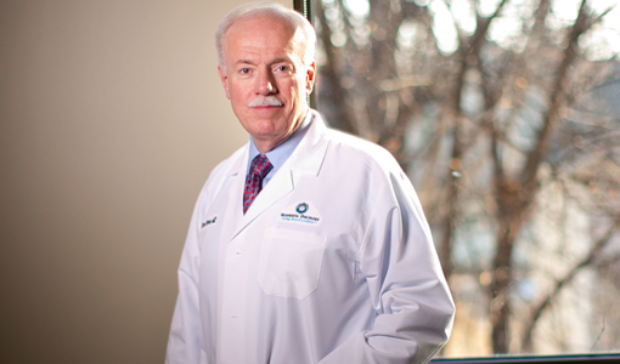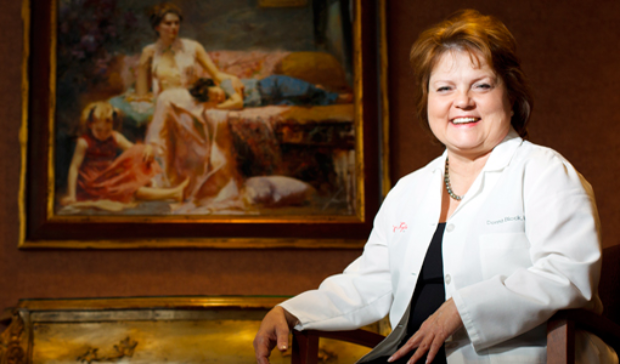It’s no secret that medical costs are soaring, and the costs related to treating cancer are particularly high. While costs and treatment decisions are serious issues facing patients, employers, oncologists, pharmacists, insurance companies and politicians, oncology today can be not only scary but also exciting.
“It’s so much better than 20 to 30 years ago,” said Tom Flynn ’71, M.D., president of Minnesota Oncology and a practicing physician in oncology and hematology. “Cancer patients today can get well and enjoy life. This trend will continue as we have better, more effective, less toxic treatments.”
Minnesota Oncology is a physician-owned practice with 58 physicians and nine clinic sites. Flynn is responsible for governance, physician policy development, strategic planning and relationships with outside entities such as hospitals and insurance companies. He is the face of the organization to the outside world and, as a physician leader, he works closely with the executive director of the practice. An alumnus of the University of St. Thomas with a major in chemistry, Flynn shared his views on trends in oncology of particular interest to non-physicians and businesspeople.
Costs and Reimbursements
You can’t talk about trends in oncology without discussing costs. Cancer care is getting more expensive, and the costs of cancer care are escalating at a faster rate than overall health care costs. Many new drugs have been introduced, but these new drugs tend to be very expensive as the pharmaceutical industry works to recoup research and development costs. As Flynn notes, these cost increases areunsustainable and must be addressed by stakeholders.
While costs rise, there is continued downward pressure on reimbursement to medical service providers. Third-party payers want to be responsive to their clients, which are typically employers. So to keep insurance costs down, they try to keep the cost of care down. As the Affordable Care Act is implemented, the health care landscape will change, but not all of the ramifications of the act are known. Flynn said, “Patients have easier access to care, but it is unclear how oncology fits in the picture.” He observes that methods of reimbursement affect care delivery.
Currently, the most popular form of reimbursement is “fee for service.” This form of reimbursement can encourage providers to provide more treatments than are necessary. An alternative, a lump-sum payment, can encourage providers to make choices for the patient based on controlling costs, rather than on the best course of action.
Flynn notes that we need to develop ways to base reimbursement on episodes of care or groups of services. His practice embraces “clinical pathways,” a way of standardizing a patient’s care based on best practices.
“We want patients to receive the best possible care at the most reasonable cost. There are ways to do this. Clinical pathways are evidence-based and have been developed to provide high-quality care. Research has shown that using clinical pathways versus using other methods to treat cancer has led to substantial cost reduction and equivalent survival rates.”
Disappearing Private Practices
These reimbursement pressures along with factors including regulatory burdens, requirements to keep electronic records and scrutiny by payers, are creating a shift from small medical group practices to more practices based in larger hospitals and health care systems.
The Community Oncology Alliance reports that during the three-and-a-half years leading up to March 31, 2011, 199 clinics closed, 369 practices reported they were struggling financially, 48 practices sent patients elsewhere, 315 practices were acquired by hospitals and 11 practices merged or were acquired by another entity. Many physicians see large health care systems as more secure environments in which to practice. From an economic perspective, it is difficult to maintain a private practice.
Bills for cancer care are large, and one outstanding $10,000 bill for a patient can have serious consequences on a small private practice. Larger groups can, of course, absorb unpaid bills more effectively, as well as keep up with increased regulatory burdens.
Changes in Treatment
Oncology may be increasingly expensive, but it also is more effective. “Our understanding of cancer on the molecular level is very exciting and has led to significant changes in cancer treatment,” said Flynn. Treatment has become more specific and drugs now can target specific genetic mutations. A leukemia that might have required a bone marrow transplant in the past now may simply require the patient to take a daily pill.
As treatment has changed, we have more cancer survivors, and more people for whom cancer has become a chronic disease. These patients who live for years with cancer need to be able to return to a “new normal” in life, receiving not only continued medical care while they have the cancer but also ancillary support, such as counseling and physical therapy, to feel as well as possible.
The sentence, “You have cancer,” can still bring dread to a patient’s heart, but it is no longer a death sentence. As medical developments continue to help in the fight against cancer, the need to tackle the issues associated with costs, reimbursement for care and caring for survivors and those with chronic cancer continues to increase. The challenges are enormous, but with such optimistic outcomes for patients today, the field of oncology is filled with a sense of hope and possibility.
Read more from B. Magazine





